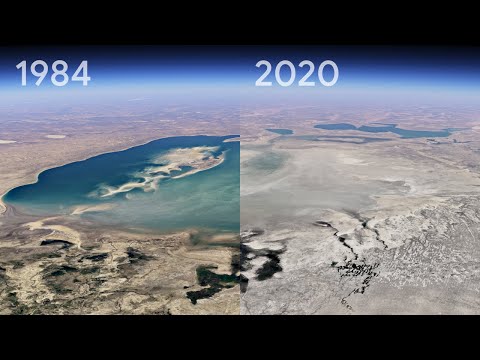Google Earth gives you a fascinating 3D tour of the planet in your web browser, and the app’s newest feature lets you look back from the current day all the way to 1984 – so you can see how climate change has changed the face of Earth over the last 37 years.
Google itself has highlighted a few areas in particular you might want to check out: the retreating Columbia Glacier in Alaska, for example, or the shifting coastline around Chatham, Massachusetts. You can see cities rise and forests disappear in the blink of an eye through your laptop.
Head here in your browser to use the timelapse feature for yourself. You can search for a specific place on Earth, or browse through one of the five suggested categories of timelapse: Changing Forests, Fragile Beauty, Sources of Energy, Warming Planet, and Urban Expansion.
You can also access more than 800 highlights packages that Google has put together by visiting this page in your browser. See ice flows retreat, solar farms expand, rivers change course, lakes dry up and much more, in either 2D or 3D.
“Our planet has seen rapid environmental change in the past half-century – more than any other point in human history,” writes Rebecca Moore, director of Earth Engine & Outreach at Google Earth.
“Many of us have experienced these changes in our own communities; I myself was among the thousands of Californians evacuated from their homes during the state’s wildfires last year. For other people, the effects of climate change feel abstract and far away, like melting ice caps and receding glaciers.”
The new timelapse feature makes use of some 24 million satellite photos gathered by Google Earth. Data from NASA, the US Geological Survey (USGS), the European Union, and the European Space Agency (ESA) was collected along the way.
Google says more than 2 million processing hours were needed to process these 20 petabytes of imagery into a single 4.4 terapixel-sized video mosaic – and to give you a sense of scale, that’s around 530,000 videos in 4K. Happily, Google used carbon-neutral, 100 percent renewable energy-matched data centers for the job.
The new imagery is free to access and use, like the rest of Google Earth, and it’s well worth exploring how our planet has changed over the last 40 years. It’s not quite the same as visiting these places for real, but it can bring home the scale of the damage that climate change is doing, from widening deserts to shrinking glaciers.
“With Timelapse in Google Earth, we have a clearer picture of our changing planet right at our fingertips – one that shows not just problems but also solutions, as well as mesmerizingly beautiful natural phenomena that unfold over decades,” writes Moore.



